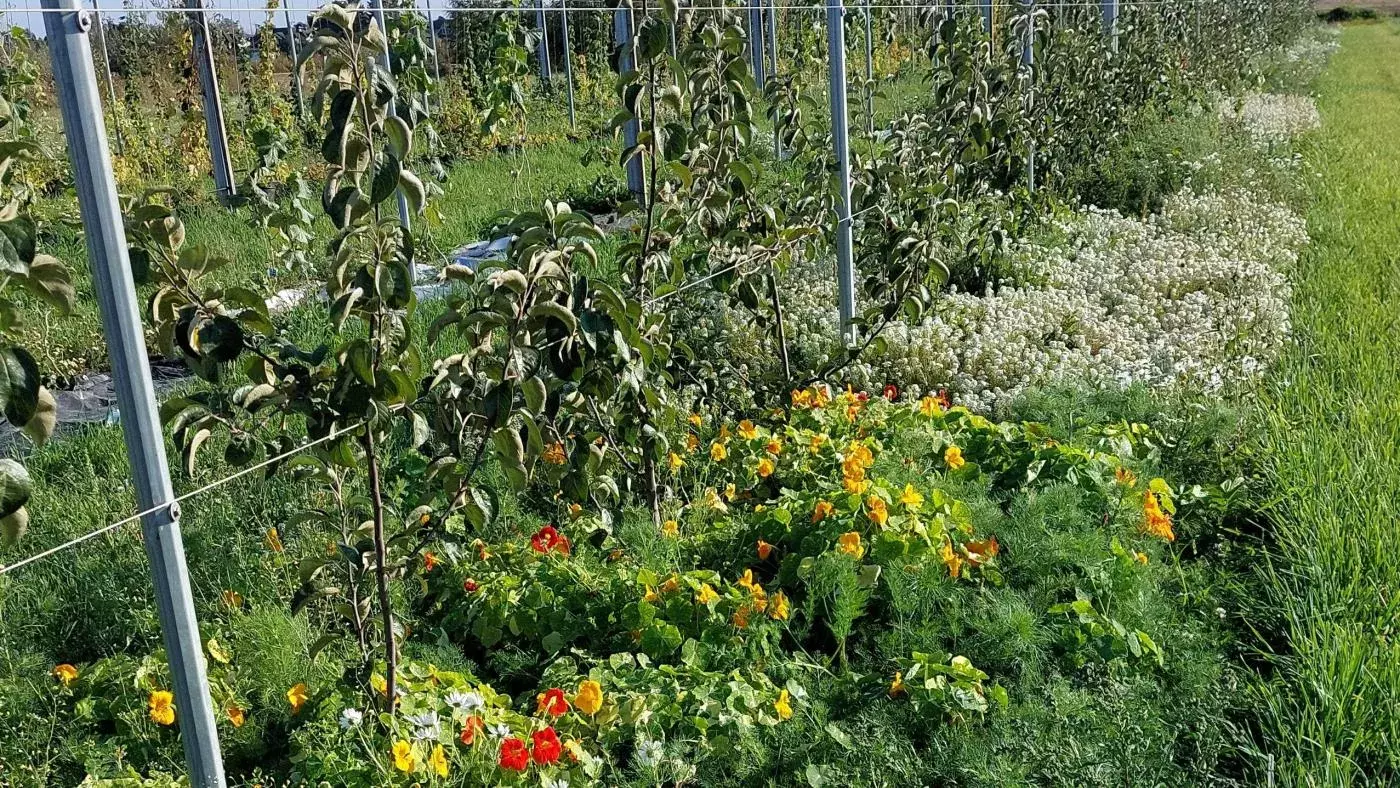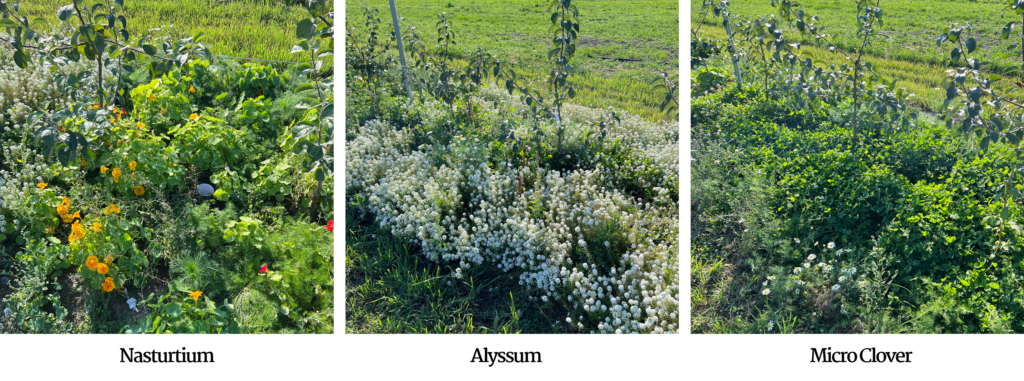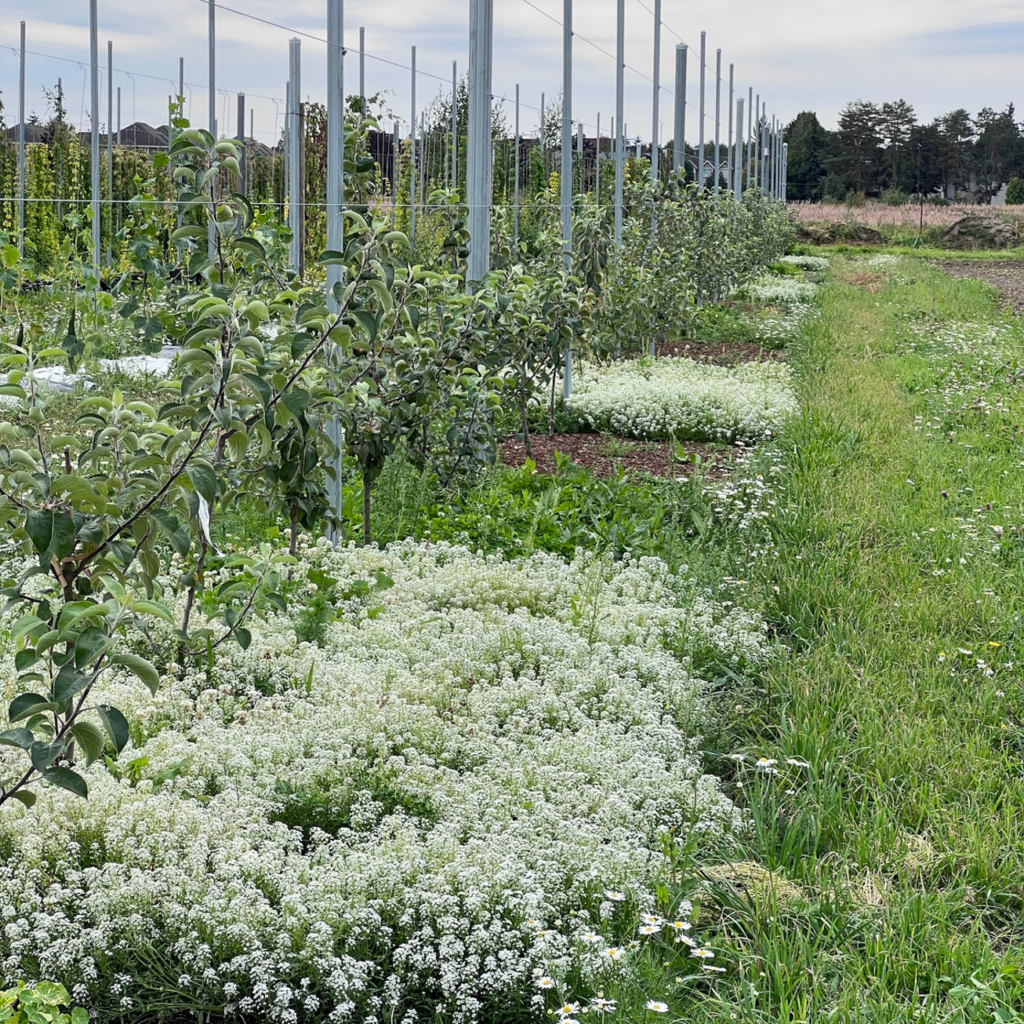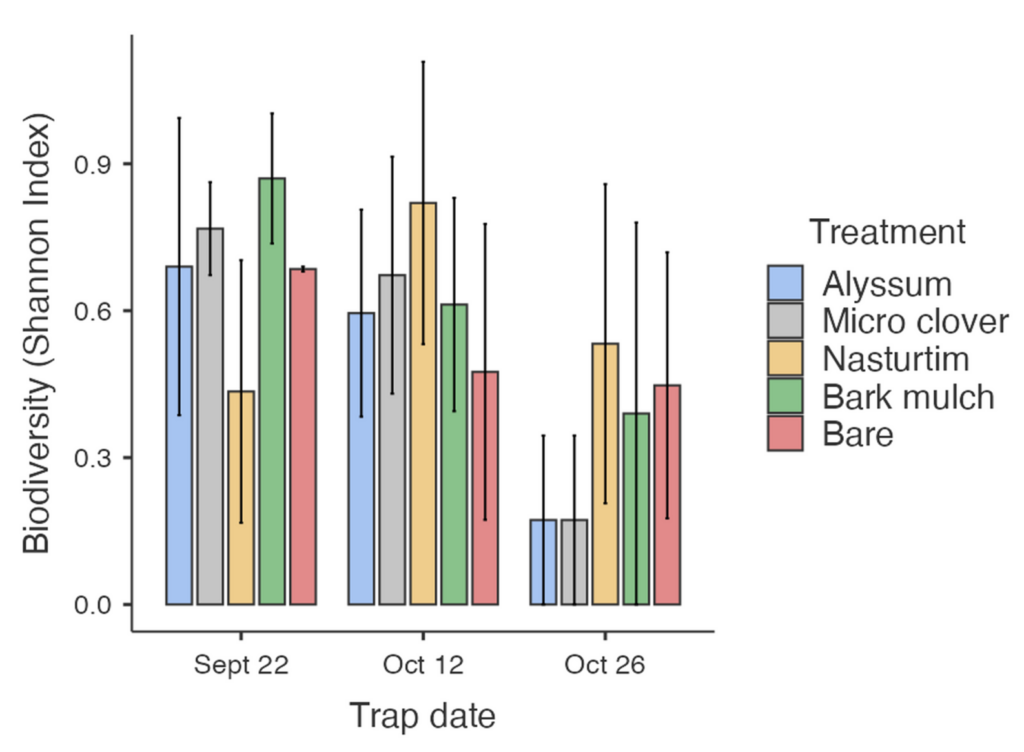

Alyssum living mulch suppresses weeds during orchard establishment but does not affect ground beetle biodiversity.
Sustainable Agriculture Student Research Project
Living and Non-living Mulch Effects on Ground Beetles and Weeds in a New Apple OrchardHarrison Wu, Department of Sustainable Agriculture, 2023 |
Introduction
Orchard floor management is an important aspect of orchard production that involves managing the vegetation and soil on the orchard floor. Effective orchard floor management practices can improve the quantity and biodiversity of beneficial insects, improve tree fruit productivity, and reduce pest and weed pressure.
Commercial orchards often leave soil bare soil or use plastic mulch to stop weeds from growing between trees.
Using living mulches between trees could be a more sustainable weed suppression approach than using non-biodegradable plastic mulch or applying chemical herbicides.
Objective
Evaluate the influence of living mulches on weed suppression and ground beetle biodiversity in a high density apple orchard.
Methods
- Location: Apple orchard in east field of KPU Farm, Garden City Lands, Richmond, BC
- Orchard layout: 60 apple trees in total, consisting of 4 varieties (Gala, Empire, Sunrise, Fuji), 15 trees per variety, in an 80 meter row at 1.25 meter spacing. Planted on April 24 and 26, 2023.
- Design: Randomized Complete Block Design with 4 replicates and 5 treatments.
- Bare Control
- Bark Mulch
- Alyssum (Fig. 1)
- Micro clover (Fig. 1)
- Nasturtium (Fig. 1)
- Plot size: 2 x 4 m
- Dependent variables: Ground beetle abundance, Shannon Index of biodiversity, weed cover, ground cover
- Statistical analysis: Mixed model & ANOVA

Figure 1. Established living mulches in a new apple orchard.

Results

Figure 2. Early season weed coverage (% ground cover) by orchard ground cover treatment. Bars labelled with the same letter do not differ significantly (Tukey test, n = 5, α = 0.05). Error bars denote standard error.

Figure 3. Number of ground beetles caught, by ground cover treatment and trapping date. No significant treatment effect was detected, but catch differed by trapping date (Tukey test, n = 5, α = 0.05). Error bars denote standard error.

Figure 4. Ground beetle diversity, according to the Shannon Index, by ground cover treatment and trapping date. No significant treatment effect was detected, but diversity differed by trapping date (Tukey test, n = 5, α = 0.05). Error bars denote standard error.
Conclusion
- Alyssum and bark mulch can effectively suppress weed growth in the early stage of orchard establishment.
- The various orchard floor management tactics did not significant affect ground beetle abundance or biodiversity. Date effects were likely due to changing seasons and weather.
Acknowledgements
Thanks to Dr. Mike Bomford, Dr. Rebecca Harbut, Sahar Zandieh, Andy Smith, Tianhao Wen and the farm crew that helped me with this experiment.